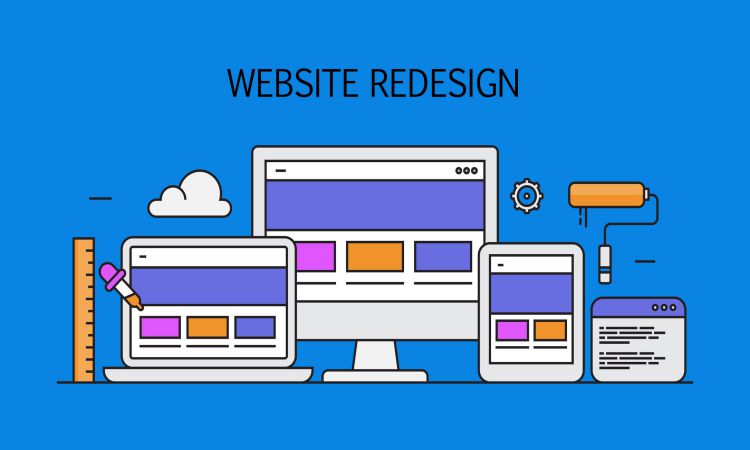 A website redesign breathes fresh air into your digital presence; the process rejuvenates the experience of accessing your digital business, making it more attractive and user-friendly. It’s the cherry on top of your digital dessert. Here’s what our design team has to say about the entire process;
A website redesign breathes fresh air into your digital presence; the process rejuvenates the experience of accessing your digital business, making it more attractive and user-friendly. It’s the cherry on top of your digital dessert. Here’s what our design team has to say about the entire process;
Begin Research: Planning
It’s worth noting that you can only tear down your house’s siding with a strategy for rebuilding it. The time you take to plan and strategize reflects your concern for the result. That’s why a thorough web redesign strategy begins with a consultation with expert strategists to review goals and address existential questions, such as why your business exists, your service offerings, and your target audience.
What follows is an extensive note-taking process and a thorough SEO audit of your website and those of your competitors. A content audit will also be necessary for your website. A knowledgeable web design agency can help you develop brand guidelines to guide your project. So before the ship sets sail, it pays to determine who’s on board and how they want to sail.
MOAR Framework For Information Architecture
When you hire a web design agency, you can expect them to plan and demonstrate every stage of your website redesign in advance. Considering that they are already familiar with your brand, including the target visitors and expectations, a reliable web design agency will plan how to encourage visitors to take various actions on your website.
The process involves reviewing your content to create an initial sitemap, followed by a comprehensive sitemap. It is the most straightforward approach to prepare you for the features you want in your new website and how visitors will navigate it. A site map serves as an initial blueprint that documents;
- The total number of pages on the site
- How users can quickly find the most important content
- The hierarchical relationship between the pages of the website
- How users can find related content conveniently
Blueprinting For UX Design
Once you clearly understand your site’s content, the next phase is to map it into a new space. In this phase, user experience designers transform the sitemap into wireframes. Ideally, these are working prototypes of a website’s pages and menus. They are similar to structural designs without color. They primarily show how the website works rather than how it looks in a virtual assessment.
Content Collection: Shopping And Packing
Site maps and prototype introductions often reveal spaces that need more material or sections with outdated content incompatible with the enhanced area. As a result, a custom content prototype integration from approved UX designs into your site follows; this is a straightforward, block-based method to assemble all the necessary content for your new website. It’s also time to seek assistance with editorial work, images, copywriting, and search engine optimization.
Website Decoration With Style Tiles
At this stage, the actual web design process begins. You’ll need brand guidelines, market studies, and a brand session to determine how your visitors experience your website, what impressions you want them to gain, and your company’s character. These are essential for creating style boards or mood boards. These include color palettes, graphics, CTA elements, and font mockups.
Decorate Your Website: Web Design
Redesigning a website involves designing the pages, which are then handed over to the web developers to start building. You and your designers make all the aesthetic decisions using mockups of various site elements in full, gorgeous color. Then a developer takes care of your setup, applying your style tiles to the UX design, often with replacement photos and Latin “lorem ipsum” prose. The process is critical to allowing you to focus on your site’s design aesthetic without being distracted by the content you’re gathering.
Development: Website Creation
Creating a custom website for your business and content begins with transforming your website’s code into a good design. At this stage, developers ensure everything runs well by aligning the website’s many features.
Population And Migration
The process of migrating content to a new website is usually inaccessible to the public. Your web redesign team populates the new site with content obtained from the content prototype and direct migrations, such as exporting blog articles and importing them to your new website.
Transfer
A thorough QA process starts internally and continues with QA sessions on your site to ensure everything is flawless and working on all devices. Pre-launch and post-launch SEO are critical at this stage to ensure your site launches appropriately, and you can quickly identify and fix bugs. In addition, the redesign team will provide you with tools to monitor the data and instructions on maintaining the content in your new design.
Hosting And Maintenance
Websites do not maintain themselves to remain error-free. Instead, their structure needs to be maintained and updated regularly by professionals. Web hosting and maintenance options are the keys to achieving these goals.
When looking for a qualified web designer, ensure you hire a company that understands your needs intimately and will ensure your website remains functional and secured long after it is completed.




